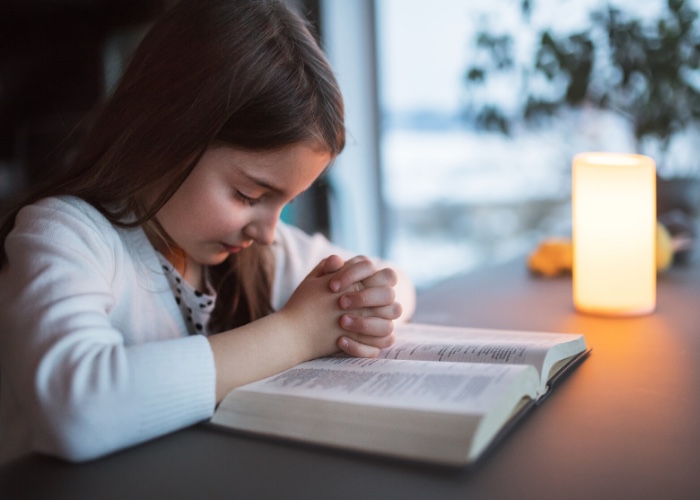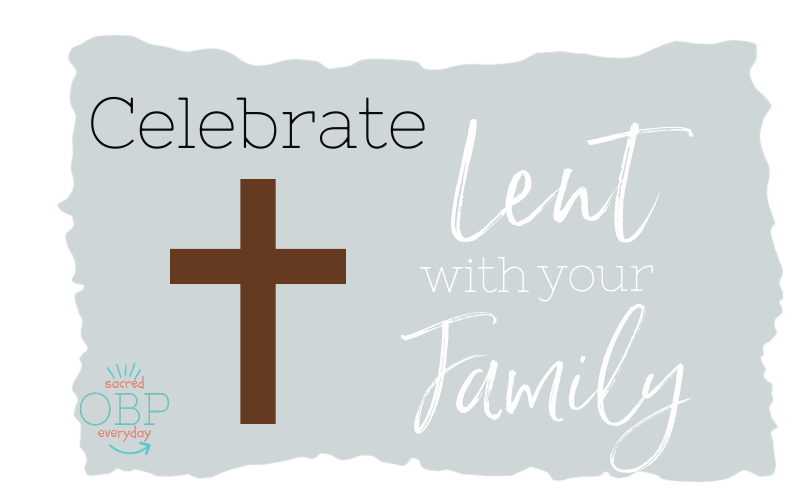Today’s post is a guest post from author and abbess Beth Booram. She and her husband, David, own the beautiful Fall Creek Abbey in Indianapolis. I read this post and fell in love with their message of encouragement during this time of sheltering-in-place. Beth graciously agreed to let me share it in its entirety. I know you’ll find much to reflect on in what she shares. See more about them and a list of their resources at the bottom of this post.
Monastery-at-Home

(Even families with kiddos;)
I’ve talked to several friends and family who are about to go bonkers while taking care of kids who are restless and bored. This lifestyle of shelter-in-place is so foreign to our normal day to day lives. We feel held captive, in prison as it were, because of the restrictions necessary to slow the spread of the Coronavirus. Yet what if we framed our current situation differently? What if we considered the gifts and ancient wisdom rooted in the tradition of cloistering—a term given to those living a monastic life? Are you prepared to monastery at home?
And if we must cloister, why not monastery-at-home?
David and I have lived a cloistered life for the past eight years. By that, we certainly don’t mean we’ve retreated from society and holed up at Fall Creek Abbey, cut off from the world. (Our close to 9,000 guests would suggest otherwise.) Eight years ago, when we founded the Abbey, we began to live life very differently. As we’ve reflected on the time in which we find ourselves, it seems that our broader society is also being invited to live life very differently—to practice monastic living. Far from the normal push of life, this new shelter-in-place mandate can be daunting.
So, we decided to compile a list of some things that we’ve learned about the monastic life and provide them for you, even those of you with kids! These suggestions are just that — suggestions that might help you intentionally turn this uninvited life-style change into something positive for you and your family.
Pray-Work-Study
In all monastic communities, the genius behind their order is a gentle daily structure that typically looks like pray-work-study. Each of these three activities receives about a third of the community’s daytime hours. Praying the hours (a term given to the five to seven times each day for personal and communal prayer) helps create a framework for when other activities begin and end each day. So, for example, after Lauds, which is morning prayer (6 am), the monks or nuns will do their assigned chores until Terce, prayer at the third hour (9 am).
So, what would it be like for you and your family to establish a gentle structure that works for you? (Emphasis on “gentle” and “works for you.”) Maybe it’s just morning prayer, or evening prayer, or meal-time prayer. And then decide what hours are given to work, including playtime, which is a child’s work, household chores, and job-related work for parents. Then decide what hours are given to study, which might include reading, writing, creating or quiet play.

Cultivate a Monastic Aesthetic
We’ve learned from what we do at Fall Creek Abbey that dedicated sacred space is profoundly important in helping us experience the shalom (peace) of God. We have intentionally created an aesthetic that mimics a monastery. When you enter the Abbey, often you will hear Gregorian chants playing in the background, notice candles lit in the foyer and on the mantle, and experience simply decorated and uncluttered space in each room.
So, what would it be like for you to create a monastic aesthetic in ways that work for you and your family? Kids love candles, and soft, instrumental music in the background is soothing to everyone. While it’s impossible to eliminate clutter if you have kids in your home, consider dedicating a “quiet room,” something I will describe next, where you can clear out space and create a touch of the sacred.
Dedicate a Quiet Room
Every monastic community has a chapel or sanctuary that is dedicated to quiet and prayer. In addition, the “cloistered” part of the community is exclusively for the brothers or sisters only—no visitors allowed. Having these protected spaces allow for individuals and the community to always have a place available when there’s a need for personal time, prayer and reflection. Something we’ve learned at our Abbey is that dedicating space for quiet and prayer creates an environment infused with the Presence of God.
While you won’t likely have space for a prayer chapel or sanctuary within your home, you can dedicate a room as a sanctuary. Then again, you may not even have a room to spare, so how about a corner or closet? Wouldn’t it be lovely to have a devoted place for silent being? Anytime anyone in your family needs some space, they can enter this quiet zone of your house where everyone knows the rules—no noise or intrusions. Parents who need a break from kids (if they’re old enough to understand) can explain that when they’re in the quiet room, it’s not okay to interrupt (unless, of course, the house is on fire).
Create a Family Altar
The altar is at the front of a sanctuary and is where Holy Communion is prepared and served. It’s a table where candles are placed and the chalice, plate, crucifix, and often a bible are arranged. It’s a focal point of the sanctuary and draws our eyes forward and upward, often to a stained-glass window or a crucifix/cross hanging on the wall. The altar’s purpose is ceremonial and symbolic, so it also infuses the surroundings with a sense of the sacred.
Creating a family altar is a wonderful activity in which to involve your children. Perhaps you could designate a surface in your quiet room, like a mantel, coffee or sofa table—or for that matter, a portable card table or crate upturned. You can select items together that have meaning for you and your family. Pictures, photos or paintings, flowers, pine cones, shells, ribbons or table runners, small figurines, crosses and, of course, candles (that can only be lit by adults). You can change-up the altar and add different colors for different seasons like Lent and Easter. The gift of the family altar is the way it creates a focal point and reminds you that your family belongs to God and God belongs with your family.

Establish Quiet Hour(s)
Within monastic communities there are established times of silence. There’s silence within the structure of the Liturgy of the Hours (those five to seven times of daily prayer) and at other times, like in the evening past a certain hour, or during Holy days. Space and time are given to silence. For silence is truly God’s native language. And silence is a repairing and healing balm for all of us who live in a noisy world, both without and within.
Establishing a quiet hour (or half-hour) during the day can begin to acquaint you and your kids with the gifts that silence offers. Give it a try! Of course, it will take practice and you’ll probably have a lot of resistance, not just from your kids, but within yourself. Yet the break from interactions and distractions might be the difference between losing your mind, or not! Even small children are capable of learning to be quiet (ask their teachers—they really can do this) and you can help them by observing the quiet, as well.
If we must cloister, could we embrace this as an opportunity to learn from the wisdom of the monastery?
Why not give it a try—even just one of the suggestions listed. These ideas aren’t intended to put anyone under the pile or suggest that you’re not doing enough already. Our hope is to cast vision for how this cloister time might help us welcome the Shalom of Christ through practicing monastery-at-home.
Warmly,
your doting Abbess and Abbott, Beth and David Booram
Connect with Beth and David on their Fall Creek Abbey Facebook page and at their website Fall Creek Abbey. Be sure to check out their books, free resources including a Holy Week guide and a Coronavirus prayer guide, and their blog. Join them April 2, 2020 at 9 p.m. EST on their Facebook page for “Light a Candle Virtual Prayer Vigil.”





Leave a Reply